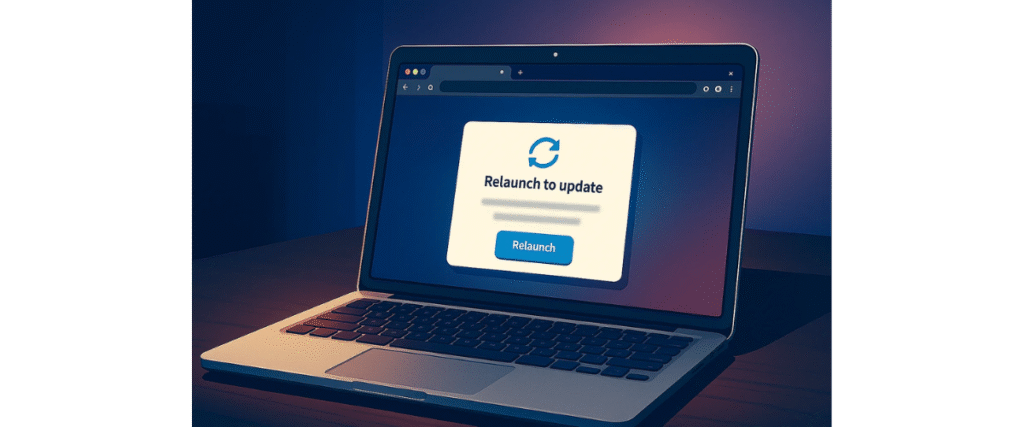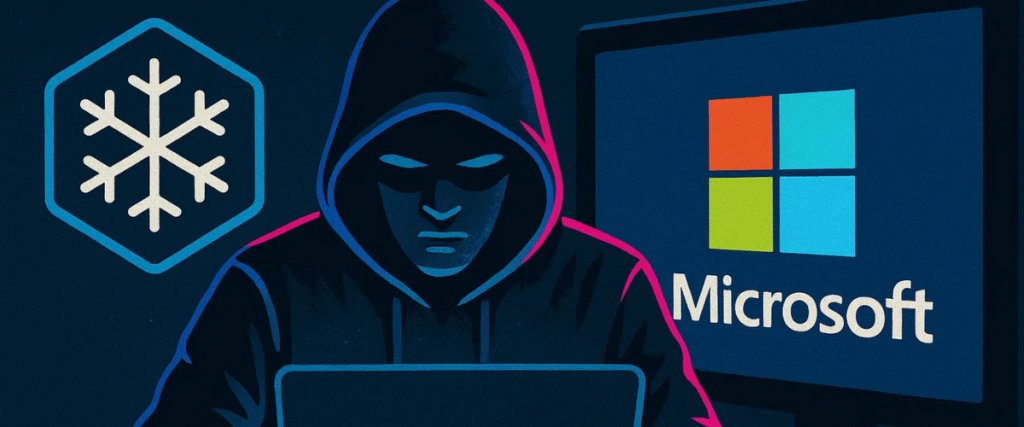
Costly 2025 Microsoft Azure Outage: Yesterday’s Top Facts
Did your coffee app stall at checkout, or did Xbox/Minecraft refuse to load? That wasn’t your phone or Wi-Fi. It was a broad Microsoft Azure incident rippling through services many of us use every day.
On Wednesday, 2025-10-29, Microsoft Azure—the backbone behind Microsoft 365 and many consumer-facing apps—experienced a disruption. The symptoms were clear: failed sign-ins, timeouts, and stalled portals. Early reports pointed to Azure Front Door (AFD), Microsoft’s global edge service, where a configuration change appears to have introduced widespread routing issues. Microsoft began rolling back and rerouting traffic while status pages and admin portals intermittently slowed. For several hours, routine work turned into issue management.
If you noticed problems at the office, you weren’t alone. The outage hit during the North American workday and extended beyond Microsoft properties. Airlines advised manual check-ins, retailers and coffee chains reported app errors, and gamers struggled to authenticate. This was not a niche event. It was a public reminder that the cloud operates as an interconnected supply chain—identity, routing, and content delivery now sit on the critical path for everyday business.
For Canadian SMBs, the lesson is practical: map critical dependencies (who handles identity, routing, and storage), establish a fallback communications channel that doesn’t share the same identity provider, and pre-approve “graceful degradation” steps for sales, support, and finance. Instrument outcomes you care about—sign-in success, page load times, checkout error rates—and act when thresholds slip rather than waiting for a status page. And remember: while early reporting indicates an AFD configuration issue, a formal root-cause analysis hasn’t been published yet. Plan on facts, prepare for uncertainty, and make resilience a first-order feature of how you do business.

From Config to Chaos: The Short Story
Azure Front Door (AFD) sits in front of Microsoft and customer applications to accelerate delivery and manage global routing. Multiple outlets reported that a configuration change on AFD led to requests failing or timing out. With AFD degraded, dependent services—Microsoft 365 (email, Teams, SharePoint), Xbox, Minecraft, and more—struggled to authenticate, load portals, or serve content. Microsoft paused further AFD changes, initiated a rollback to a known-good state, and began traffic re-routing to restore service. At the peak, even status endpoints and admin portals were slow or unreachable.
Here’s what that means operationally: AFD acts as both gatekeeper and traffic controller. If its policies or routes misfire, otherwise healthy apps can appear broken because requests never reach them or arrive too late. Identity flows feel it first—when edge routing stalls, single sign-on cascades into “everything is down.”
Global rollbacks don’t snap back instantly; propagation is staggered by region, cache, and provider peering, so some users recovered while others still saw errors. This remains the working hypothesis drawn from public reporting, telemetry symptoms, and Microsoft’s interim updates. A formal post-incident report has not been published, and causation versus correlation isn’t confirmed yet. What is clear: fragility at a single edge layer rippled across work, play, and retail within minutes—proof that routing, identity, and content delivery now sit squarely on the business-critical path.

From coffee shops to car dealers, why this matter to SMBs
Many small and mid-sized businesses (SMBs) fall into the “set it and forget it” trap—they deploy cybersecurity tools once, check the compliance box, and then assume they’re protected indefinitely. Unfortunately, this mindset creates a dangerous gap between what business owners think is happening and what insurers, regulators, and sophisticated attackers actually expect. Cybersecurity is not a one-time project; it is an ongoing, evolving discipline of monitoring, detection, and response.
Even though the January 2024 breach occurred on Microsoft’s internal corporate systems, Azure and Microsoft 365 customers were not shielded from indirect fallout. The stolen emails and tokens created multiple downstream attack opportunities:
- Supply Chain Implications: For MSSPs and MSPs managing dozens—or even hundreds—of client tenants, the breach highlighted how a single weak link can create cascading exposure. If an attacker weaponizes stolen credentials or OAuth tokens from one tenant, they can exploit trust relationships to leapfrog into others. This risk is particularly severe in industries like healthcare, where one managed service provider might oversee dozens of clinics, or in finance, where interlinked systems manage sensitive transactions.
- OAuth Application Abuse: One of the most concerning outcomes was the exfiltration of OAuth consent information. With this data, attackers could attempt to register malicious applications inside Azure Active Directory (Azure AD). Once registered, these apps can impersonate legitimate tools, request excessive permissions, and silently siphon data without raising user suspicion. For MSSPs, this means routine audits of OAuth applications are no longer optional—they’re essential.
- Credential Reuse Risks: Stolen passwords and identity details discovered in breached emails created a new wave of credential reuse attacks. Attackers know that many users recycle passwords across multiple accounts and services. If even one account shared between Microsoft’s corporate environment and Azure tenants was reused, it could provide attackers with a direct foothold into customer environments. Passwordless authentication, conditional access, and strict credential hygiene policies must become the new baseline.
- Government & Healthcare Targeting: The U.S. Cybersecurity and Infrastructure Security Agency (CISA) quickly issued directives warning that Federal Civilian Executive Branch (FCEB) agencies were at heightened risk, given their reliance on Microsoft 365. Similarly, healthcare organizations faced amplified threats—unauthorized access to patient records could trigger HIPAA violations, lawsuits, and lasting reputational harm. For MSPs serving these verticals, the message was clear: compliance-driven security is not enough; active defense strategies must be deployed.

The Hidden Risks Incidents Like This Reveal
- Single-IdP fragility. If Microsoft Entra ID (formerly Azure AD) or the edge in front of it is constrained, SSO (single sign-on) can become single point of failure for your entire app lineup. Even services “not down” can be effectively down if users can’t sign in.
- Status page dependency. Many teams rely on vendor status pages to decide when to escalate. But during broad outages, those pages can lag, throttle, or fail. If your incident response plan assumes a perfect status feed, you will lose precious minutes when it matters most.
- Communication choke points. If email and Teams wobble while phones and SMS still work, do your managers know when to switch? Do you have a prewritten “we’re experiencing a third-party outage” note for customers? Most don’t—and drafting one in crisis burns time.
- Operational blind spots. Many SMBs don’t maintain a living map of “what runs where.” They discover Azure/Jira/Okta/Stripe dependencies only when something breaks. That’s not resilience; that’s roulette.
- Security drift during outages. In the scramble, someone inevitably suggests “temporary” policy relaxations—disabling conditional access, bypassing MFA, sharing tokens. Attackers watch for these windows. You need guardrails that resist well-intentioned shortcuts under stress.
Quiet Excellence in a Noisy Outage
The more prepared SMBs apply a consistent pattern:
Security discipline: No “just this once” MFA bypasses. No broad allow-lists. Exceptions, if any, were targeted, logged, and automatically revoked.
Multi-channel communications: When Microsoft 365 slowed, they pivoted to fallback channels (SMS trees, a non-Microsoft chat, or voice bridges) maintained for precisely this scenario.
Pre-approved degradations: They didn’t invent workarounds on the fly. They had a list of sanctioned alternatives—local email clients with cached mode, emergency Gmail aliases, read-only access to a replicated document store—each with a time box and an owner.
Customer-first messaging: They posted concise status updates across their website, Google Business profile, and social channels within minutes, flagging the upstream provider and sharing next steps. No blame, no drama, just clarity.
Evidence gathering: They captured timestamps, traceroutes, and error codes to help post-incident reviews and vendor credits. That data also informs their own tabletop exercises.
A Resilient Posture You Can Adopt Now
1) Build a living dependency map. List your core business functions (sell, bill, support, fulfil) and trace each to the SaaS and cloud services underneath. Note identity (who logs you in), edge/CDN (who routes your traffic), and region (where it lives). This simple map is the backbone of your outage playbook because it tells you where a public cloud incident will actually touch your business.
2) Decide your “communications quorum.” Establish three tiers: Primary (e.g., Microsoft 365), Fallback (e.g., an independent chat/bridge), and Out-of-Band (SMS tree or voice line). Run a monthly, 15-minute drill switching between them so the pattern is muscle memory, not a memo.
3) Pre-approve graceful degradation. Identify what you can do in a pinch that keeps you safe: read-only operations on key docs, manual invoicing from a mirrored template, temporary customer updates on your website banner. Put maximum durations and owners on each workaround.
4) Separate the crown jewels from routine work. If payroll approvals and board communications rely on the same identity provider and the same device posture as day-to-day chat, you’ve concentrated risk. Consider isolating these flows (segmented identities, hardware keys) so your most sensitive tasks can continue even when primary collaboration tools are wobbly.
5) Monitor more than status pages. Subscribe to vendor RSS feeds, but also instrument your own outcomes: sign-in success rates, median page loads, and job completion times. When those drift, flip to Fallback—don’t wait for a green dot to turn red.
6) Treat resilience as security’s twin. Your Zero Trust controls should help you in an outage, not hinder you. Conditional access policies can include offline tokens, phishing-resistant WebAuthn hardware keys, and emergency break-glass accounts stored in a sealed, audited vault.
7) Hold real table-tops. Recreate yesterday’s Azure-style failure: assume AFD routing degrades and Entra sign-in success falls below 60% for two hours. Make departments practice the pivot, validate customer messaging, and collect metrics you’ll want in a post-mortem.
“But we’re small—does any of this scale down?”
Absolutely. Resilience is about decisions, not data centres. A 25-person firm can:
- Keep a prepaid conference bridge number and an SMS broadcast app.
- Maintain a read-only mirror of must-have documents (proposals, SOW templates, POs) in a secondary cloud provider.
- Issue two hardware security keys to executives so leadership communications remain available and phish-resistant during identity hiccups.
- Publish a one-paragraph website banner in minutes when a third-party outage strikes.
- Prewrite two customer updates (short/long) and assign one person per week as the “publisher.”
- Maintain two monitored break-glass accounts in a password vault; test quarterly and log every use.
These are cheap, boring moves. They pay off every time the internet decides to be interesting—and they’re measurable. Ten minutes of practice each month beats new tooling you never rehearse.
Lessons from the Azure ripple effect
For busy leaders, distill yesterday’s outage into three actionable takeaways.
- Communicate like a pro. Customers forgive upstream outages. They don’t forgive silence. Have the message ready, the channels primed, and the person authorised to hit “publish.”
- Map your dependencies and practise the pivot. You can’t manage what you can’t see. A one-page diagram and a 15-minute monthly drill will outperform a 40-page policy you’ve never tested.
- Keep security on during outages. Attackers thrive in chaos. The right guardrails (hardware-key MFA, scoped exceptions, break-glass with alarms) enable continuity and safety. Practice it before you need it, under realistic, timed drills.
Closing Thoughts
Cloud incidents like yesterday’s Azure outage are uncomfortable because they reveal how much we’ve centralised trust at the edge—routing, identity, and content delivery are now part of every business’s bloodstream. The fix isn’t abandoning the cloud. It’s treating resilience as a core competency: knowing your dependencies, rehearsing your pivots, and refusing to trade security for speed in the heat of the moment.
If you want help turning the ideas above into muscle memory for your team, we’d be glad to walk you through it.
How Fusion Cyber Helps
TWe exist to make days like yesterday survivable and forgettable. As a Canadian MSSP/MSP serving SMBs and co-managed enterprises since 1985, our approach blends proactive security with practical continuity. We operate within MITRE ATT&CK and the Lockheed Martin Cyber Kill Chain, but we translate that discipline into simple business outcomes: fewer surprises, faster recovery, and no guesswork under stress.
Here’s how that shows up when clouds wobble:
- 24/7/365 SOC + XDR: We correlate endpoint, identity, and network telemetry so we can tell “provider outage” from “active compromise” quickly. That speed matters—especially when staff are tempted to relax controls to “fix” performance.
- GRC and tabletop exercises: We facilitate scenario-based drills tailored to your actual vendor mix (Azure/Microsoft 365, Google Workspace, Shopify, Stripe, etc.) and produce playbooks your teams will actually use.
- Identity-aware resilience: We harden Entra ID and SSO flows, add phishing-resistant MFA (hardware-key-first), and set up break-glass accounts with auditable, time-boxed access. If your IdP sneezes, executives can still sign critical documents and authorise payments.
- BCDR with cloud diversity: We design backup/restore and read-only mirrors across providers where it makes sense—so your sales deck and invoice templates don’t depend on the same failing path as your chat client.
- DNS and web filtering with failover: Smart DNS policies can steer around bad routes faster than a status page can refresh. When the edge is noisy, intelligent resolvers and split-tunnel options keep traffic healthy.
- Incident communications kits: We pre-draft customer-facing notices and internal call trees, integrate them with your CMS and Google Business profile, and train your managers to publish in minutes.
And for fully onboarded clients, our financially backed Cybersecurity Guarantee means if you’re breached, we fund incident response, containment, and business recovery. It’s our way of aligning incentives to outcomes you can measure.
👉 If your organization needs guidance on strengthening its Azure and Microsoft 365 defenses, request a consultation with FusionCyber today
Featured links:
AP: Azure cloud service hit with outage; AFD cited; ripple effects to brands.
FAQ:
How do I tell a vendor outage from a cyberattack on our company?
Watch patterns, not just status pages. If many unrelated services fail at once—especially at login or content delivery—it’s likely upstream. Still, verify internally: check endpoint detections, identity sign-in success rates, and firewall logs for targeted activity. Treat it as “assume outage, verify security” so you don’t miss a genuine incident while waiting for a green checkmark.
What should we do in the first 15 minutes of an outage?
Switch to your predefined comms fallback (SMS tree/alt chat), post a short customer notice, and move critical work to read-only templates or offline workflows. Capture timestamps, screenshots, and ticket numbers for the post-mortem and potential service credits. Resist ad-hoc policy changes—no blanket MFA bypasses or wide allow-lists. Time-box any exceptions and log them.
Our apps all use single sign-on (SSO). How do we avoid SSO becoming a single point of failure?
Keep SSO—but add guardrails: issue phishing-resistant hardware keys for execs and finance, create two monitored break-glass accounts with long, vaulted credentials, enable limited-duration offline tokens for essential roles, and document an “identity degraded” mode (who can do what, for how long). Test this quarterly so it’s muscle memory, not a PDF.
Do we need to go multi-cloud to be resilient?
Not necessarily. Start with cloud diversity where it counts: keep a read-only mirror of must-have documents in a second provider, use independent DNS and monitoring, and choose at least one communications channel that doesn’t share the same identity provider. Many SMBs get 80% of the benefit with these targeted moves—without the cost and complexity of full multi-cloud.
What should a small Canadian SMB monitor to catch problems early?
Track business-level signals: sign-in success %, median page load for your key app, payment/checkout error rate, and meeting join failures. Alert on thresholds (e.g., Entra sign-ins <85% for 10 minutes). Pair that with vendor RSS/status feeds and your ISP’s health. When your metrics drift, execute the fallback—don’t wait for an official outage banner.
What happened
A widespread Microsoft Azure disruption on 2025-10-29 caused sign-in failures and timeouts across Microsoft 365, Xbox, Minecraft, and Azure-hosted brands.
Why it escalated
An edge routing/config change at Azure Front Door (AFD) likely throttled requests; recovery required rollback and traffic re-routing. A final RCA isn’t published yet.
What leaders need to know
Your identity, routing, and CDN layers are single points of business risk—even if your core app was fine.
What to do now
Confirm internal security health, switch to your fallback comms, publish a brief customer update, and execute pre-approved “graceful degradation” steps for sales, support, and finance. Then schedule a tabletop focused on identity/edge outages.
Our Cybersecurity Guarantee
“At Fusion Cyber Group, we align our interests with yours.“
Unlike many providers who profit from lengthy, expensive breach clean-ups, our goal is simple: stop threats before they start and stand with you if one ever gets through.
That’s why we offer a cybersecurity guarantee: in the very unlikely event that a breach gets through our multi-layered, 24/7 monitored defenses, we will handle all:
threat containment,
incident response,
remediation,
eradication,
and business recovery—at no cost to you.
Ready to strengthen your cybersecurity defenses? Contact us today for your FREE network assessment and take the first step towards safeguarding your business from cyber threats!





















































































